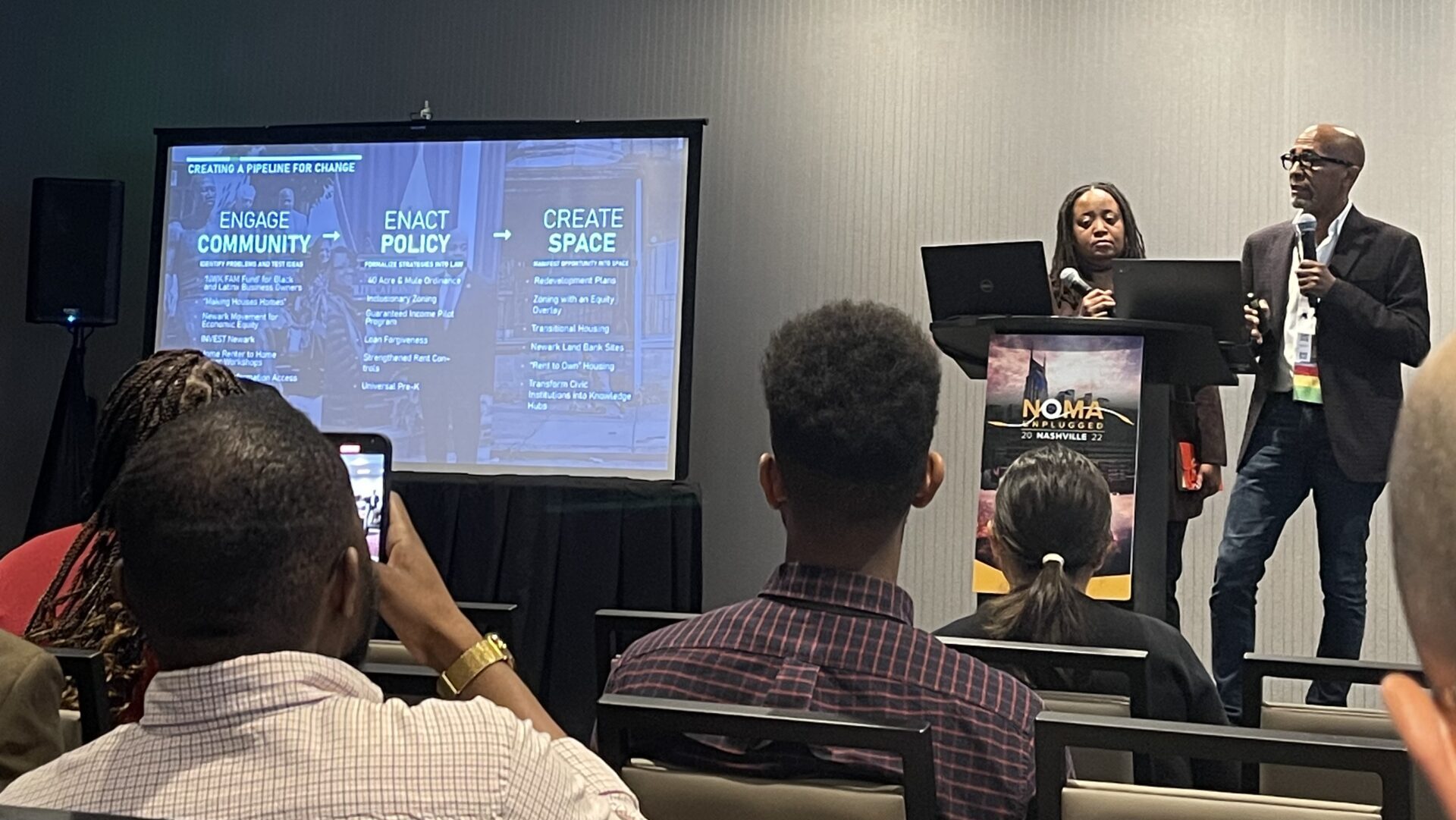NOMA 2022 National Conference Recap
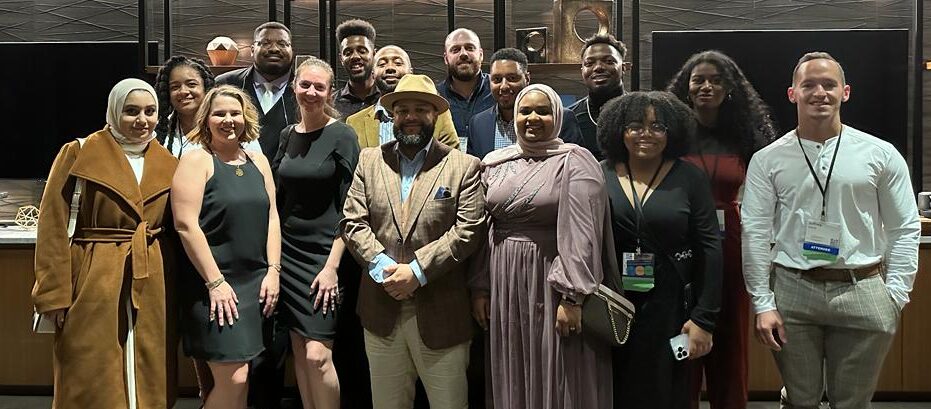
In October, Casey Byrnes and Latifa Alagah attended the national conference in Nashville for the National Organization of Minority Architects. They represented the newly formed local chapter, NOMAColumbus, as President and Vice President. This was a three day conference attended by 1,200 NOMA members, allies, and students which included educational seminars, keynote speakers, a student design competition, professional awards and recognition, tours of firms and architectural projects around the city, and celebrations of achievements by the organization and its members. With the support of Triad, this was their first time attending the conference.
Q: To start things off, how would you describe the conference to someone who has never attended?
Latifa: The moment I walked to the conference I felt like I belonged. I was very energized and excited to learn about these incredible people. It is extremely hard to describe the energy of everyone there in words. I know from the first session I attended that I want to reunite with everyone there every year, and this would not be my only time attending the conference. Everything was amazing from the first session to the last party.
Casey: The incredible amount of talent, support, well-composed research, and immersive conversations that I was absorbed by, both in conference sessions and at the social ceremonies, is almost impossible to fully express in words. It was powerful and engaging to be in the midst of so many driven people. The presentations and discussions were inclusive, poignant, and insightful. The environment allowed a huge collection of people who are accustomed to code-switching in professional settings to be vulnerable, expressive, and honest.
Q: Could you provide more detail about these sessions you attended and what some of the topics discussed were over the course of the five day conference?
L: One of my favorite sessions was titled ‘Place Driving Equity – A Guide for Action’. It was an evidence-based guide on the role of public spaces serving for shared prosperity. The presenter discussed the need for a person or committee to be embedded in the community and fully engage with the community’s members and residents in order to both effectively design for their needs and capture the essence of a community and not simply for the sake of design. All aspects of ‘place’ need to be captured, not just the physical. It was emphasized that as architects a lot of the time our role stops with the edge of the building or at the edge of the sidewalk and this needs to be reconsidered.
C: A recurring theme throughout the sessions was obviously equity-based solutions to design, but in that were perspectives that are often left out of the conversation at other conferences and platforms around the topic. The importance of diversifying the field of architecture lies in the critical fact that all people deserve spaces designed with them, for them, and by them. The profession must represent those it is serving in economic background, race, and gender in order to build the relationships necessary to effectively design for all users. Often the design process is done ‘to’ and not ‘with’. Similarly where community engagement is included in the scope, this relationship building is done ‘to’, not ‘with’. But we are architects; we offer solutions to problems that our owners didn’t know existed. In order to have a full understanding of the issues that exist, we have to include all perspectives in the process. Better identify the problem by engaging those who are closest to the problem, and often farthest from the solution. For example, recognizing that greenspace is largely gentrified doesn’t happen unless those who have been excluded from accessing greenspace step in at leadership levels to identify the issue. Accepting that sustainability without equity is sustaining inequity doesn’t come about without inclusive environmental impact research. The design of place and space cannot solve inequity, but it can be a catalyst for change and we need to disrupt the patterns with intention.

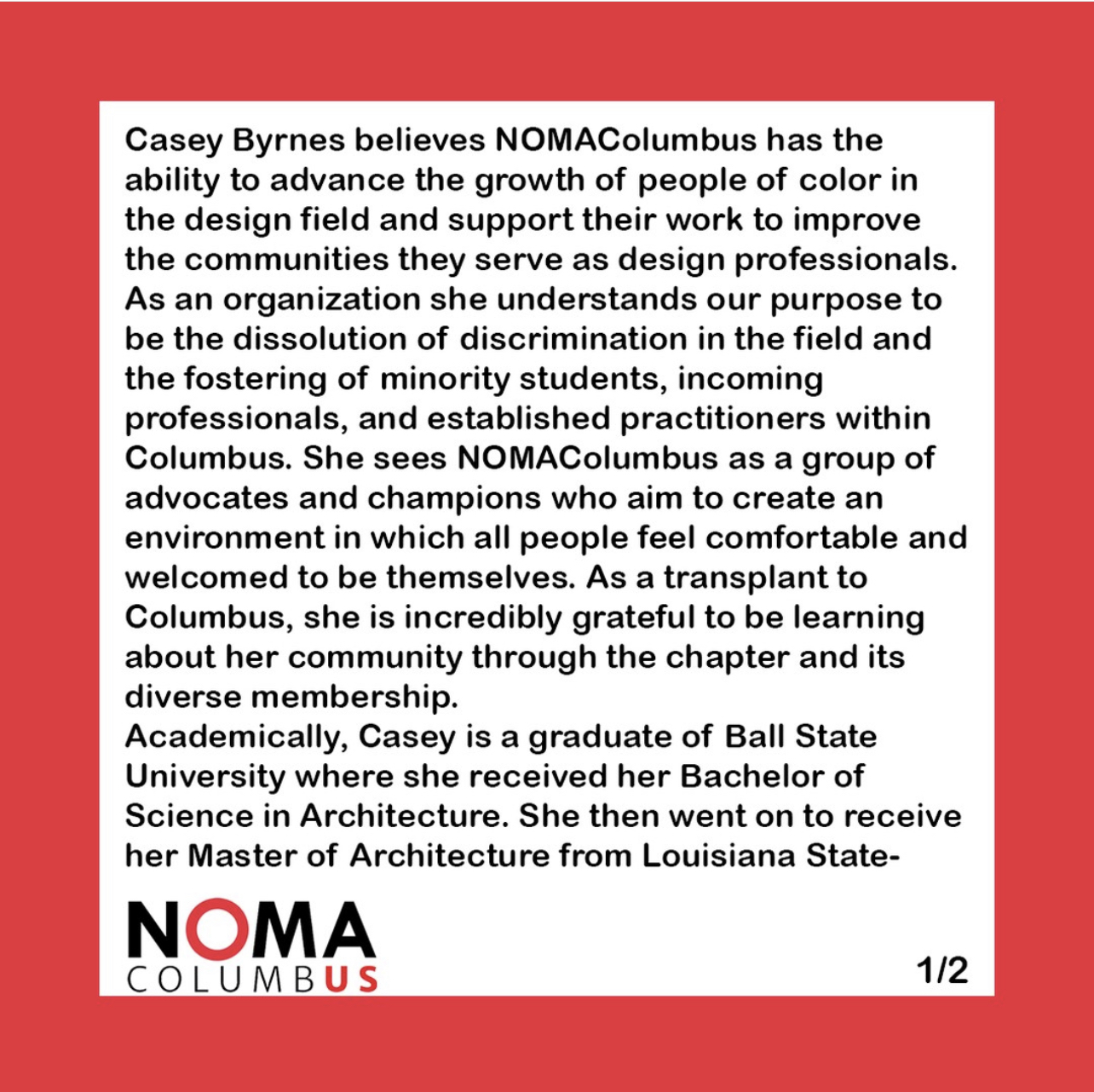
Q: What was the main takeaway from the sessions or events that you attended?
L: Many of the sessions inherently reflected on the positive impact that minority designers have had on communities across the nation. The global and local research being conducted and the number of significant projects being carried out contribute massively to both the profession and the livelihoods of those that we serve.
C: Being present for the speeches given by the outgoing president and the president-elect was my favorite part. Our current president reflected on his two year term and what NOMA means to him both personally and professionally. It was a great insight to the legacy of NOMA. Our new president gave the most impassioned speech I have ever heard. Her personal story that led her to the presidency is worthy of its own novel and I feel honored to have heard her tell it. Throughout her speech I was in shock, I was energized, and at times in tears.
Q: What positive impact did the conference have that you may not have expected?
C: I am most excited about the knowledge that I am now equipped with. It’s the insight into the history and future of NOMA and its impact, valuable research about my profession through the lens of minority groups, and tools for engaging in conversation with other practitioners and with clients about tackling some of the most complex and critical issues we face as a society.
Latifa and I are very excited about what we as a chapter get to bring back to our Columbus community. There is an amplified energy to our meetings that wasn’t there before. I cannot emphasize enough that our members’ urgency and increased passion for NOMA means great things for the future of our firms and for Columbus. One of the biggest things to come out of our attendance at the conference was the realization that our local chapter, newly formed last year, can absolutely host the national conference in the next three years. We were approached by several national board members, including the current president elect, about hosting the conference and their support to make it happen. This would be huge.
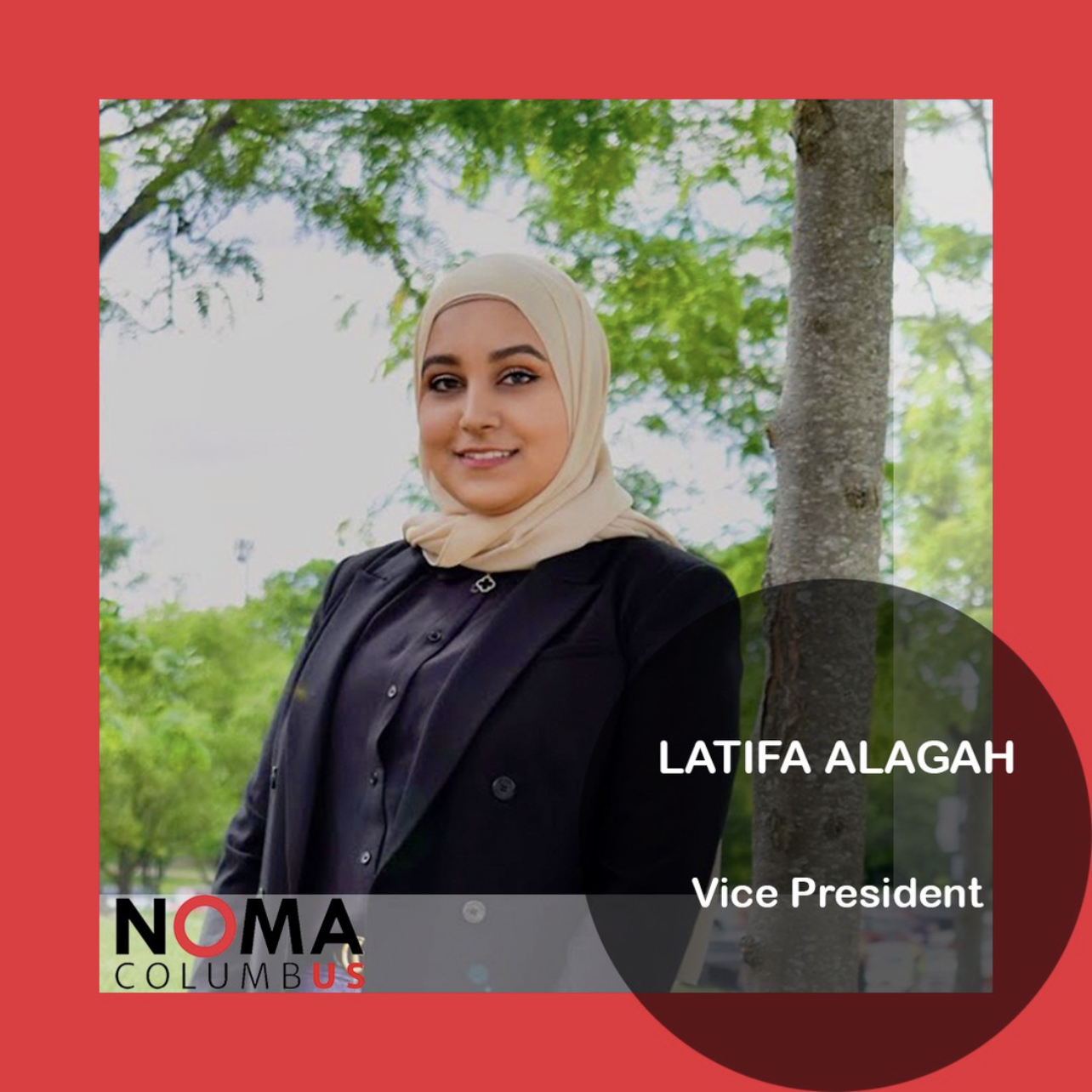
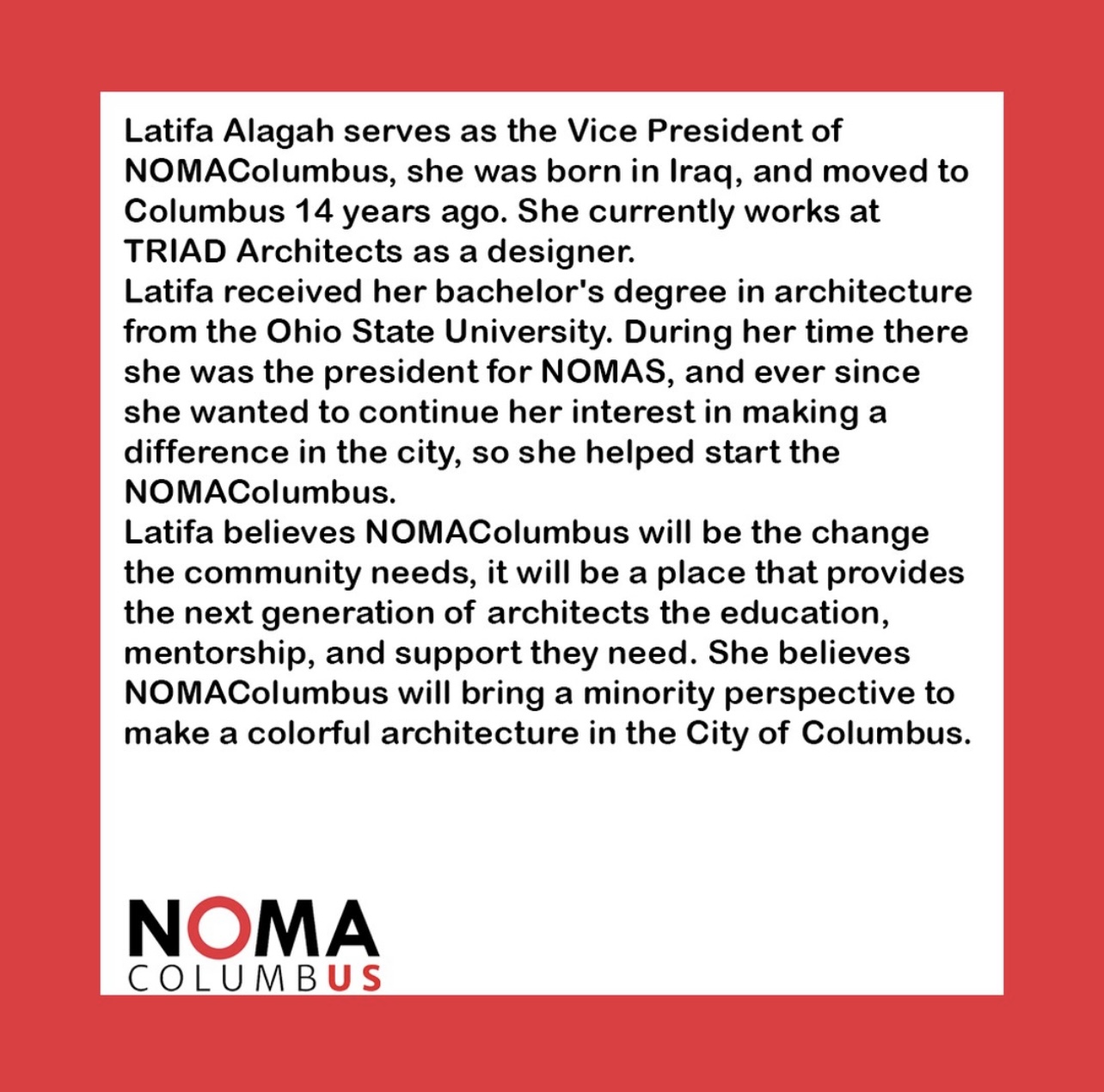
Q: What are your final lasting reflections on the NOMA National Conference?
Casey: I walked away feeling like I knew my chapter members so much better, like I had just been accepted into a family, and like I had been given the knowledge, agency, and power to make impactful change as a design professional.
Latifa: I felt exactly the same. The moment I walked through the doors, it felt like I was part of a family. A family made up of my own colleagues in my Columbus chapter and of hundreds of extremely talented and successful professionals. I felt welcomed and I felt like I belonged. That meant so much to me as a young, female, hijabi aspiring architect.
